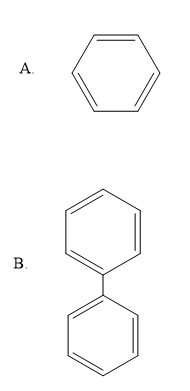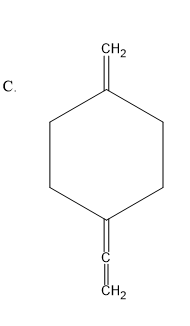
In which of the following molecules, all atoms are coplanar?


D. \[HCHO\]


Answer
501.6k+ views
Hint :Co-planar molecule can be defined as the molecule in which all the atoms, bonds, lone pairs of electrons of the compound lie in the same plane. Co-planar molecule suggests that it has taken two dimensional geometry.
Complete Step By Step Answer:
So, as we have understood the meaning of the term co-plane i.e. all the atoms of the molecules in the same plane (two dimensional).
Now, the next question arises: how to check whether the compound is co-planar or not.
So, to check this coplanarity we need to understand the Hybridisation of the molecule.
So, hybridisation is the binding of atomic orbitals to form newly hybridized orbitals.
Therefore, co-planarity is found in the unsaturated compounds.
The compounds having the \[s{p^2}\] hybridisation will be the co-planar molecule or better say that when in the compound all the atoms are in \[s{p^2}\] hybridisation, then that compound is co-planar.
So, let’s solve the given question.
From the given options we can see very clearly that the benzene molecule has all the atoms in the \[s{p^2}\] hybridized state, so it is a co-planar molecule.
Also, the option B i.e. biphenyl, also has all the atoms in the \[s{p^2}\] hybridized state only, so it is also a co-planar molecule.
Therefore we can say that the correct answer is option A and B i.e. Benzene and biphenyl.
Note :
There is a shortcut method to calculate the hybridisation of the atom of the given molecule. So for that just look at the particular atom, then count its number of atoms connected to it and not the bonds. Then count the number of lone pairs of electrons attached to it. Then add both, this will give the hybridisation of the atom.
Complete Step By Step Answer:
So, as we have understood the meaning of the term co-plane i.e. all the atoms of the molecules in the same plane (two dimensional).
Now, the next question arises: how to check whether the compound is co-planar or not.
So, to check this coplanarity we need to understand the Hybridisation of the molecule.
So, hybridisation is the binding of atomic orbitals to form newly hybridized orbitals.
Therefore, co-planarity is found in the unsaturated compounds.
The compounds having the \[s{p^2}\] hybridisation will be the co-planar molecule or better say that when in the compound all the atoms are in \[s{p^2}\] hybridisation, then that compound is co-planar.
So, let’s solve the given question.
From the given options we can see very clearly that the benzene molecule has all the atoms in the \[s{p^2}\] hybridized state, so it is a co-planar molecule.
Also, the option B i.e. biphenyl, also has all the atoms in the \[s{p^2}\] hybridized state only, so it is also a co-planar molecule.
Therefore we can say that the correct answer is option A and B i.e. Benzene and biphenyl.
Note :
There is a shortcut method to calculate the hybridisation of the atom of the given molecule. So for that just look at the particular atom, then count its number of atoms connected to it and not the bonds. Then count the number of lone pairs of electrons attached to it. Then add both, this will give the hybridisation of the atom.
Recently Updated Pages
Why are manures considered better than fertilizers class 11 biology CBSE

Find the coordinates of the midpoint of the line segment class 11 maths CBSE

Distinguish between static friction limiting friction class 11 physics CBSE

The Chairman of the constituent Assembly was A Jawaharlal class 11 social science CBSE

The first National Commission on Labour NCL submitted class 11 social science CBSE

Number of all subshell of n + l 7 is A 4 B 5 C 6 D class 11 chemistry CBSE

Trending doubts
Differentiate between an exothermic and an endothermic class 11 chemistry CBSE

10 examples of friction in our daily life

One Metric ton is equal to kg A 10000 B 1000 C 100 class 11 physics CBSE

Difference Between Prokaryotic Cells and Eukaryotic Cells

1 Quintal is equal to a 110 kg b 10 kg c 100kg d 1000 class 11 physics CBSE

State the laws of reflection of light




